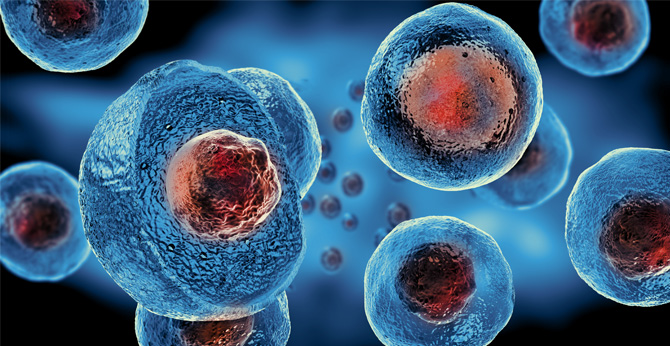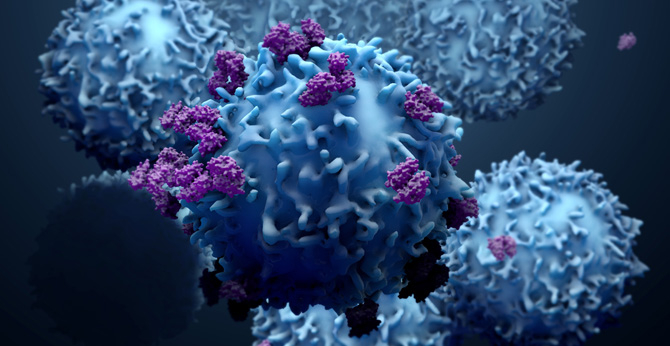All products and services are For Research Use Only and CANNOT be used in the treatment or diagnosis of disease.
Plays an essential role in viral RNA transcription and replication by forming the heterotrimeric polymerase complex together with PB1 and PB2 subunits. The complex transcribes viral mRNAs by using a unique mechanism called cap-snatching. It consists in the hijacking and cleavage of host capped pre-mRNAs. These short capped RNAs are then used as primers for viral mRNAs. The PB2 subunit is responsible for the binding of the 5' cap of cellular pre-mRNAs which are subsequently cleaved after 10-13 nucleotides by the PA subunit that carries the endonuclease activity. In addition of its function in viral transcription, PA also plays an essential role in viral RNA synthesis and promotes the formation of the trimeric polymerase complex.
 Loading...
Loading...
| CAT | Product Name | Target Species | TCR Clone | Host Species | Epitope | Allele | Vector Type | Inquiry & Datasheet |
| TCR-YC0811 | Human anti-PA T cell receptor (BC8B), pCDTCR1 | BC8B | Human | Phosphatidic acid | human CD1b | Lentiviral vector | ||
| TCR-YC0812 | Human anti-PA T cell receptor (PG10), pCDTCR1 | PG10 | Human | 1-palmitoyl-2-oleoyl-sn-glycero-3-phosphate (sodium salt) | human CD1b | Lentiviral vector | ||
| TCR-YF240 | Mouse anti-PA T cell receptor (501), pCDTCR1 | Virus | 501 | Mouse | SSLENFRAYV | H2-Db | Lentiviral vector | |
| TCR-YF241 | Mouse anti-PA T cell receptor (509), pCDTCR1 | Virus | 509 | Mouse | SSLENFRAYV | H2-Db | Lentiviral vector | |
| TCR-YF242 | Mouse anti-PA T cell receptor (514), pCDTCR1 | Virus | 514 | Mouse | SSLENFRAYV | H2-Db | Lentiviral vector | |
| TCR-YF243 | Mouse anti-PA T cell receptor (515), pCDTCR1 | Virus | 515 | Mouse | SSLENFRAYV | H2-Db | Lentiviral vector | |
| TCR-YF244 | Mouse anti-PA T cell receptor (524), pCDTCR1 | Virus | 524 | Mouse | SSLENFRAYV | H2-Db | Lentiviral vector | |
| TCR-YF245 | Mouse anti-PA T cell receptor (525), pCDTCR1 | Virus | 525 | Mouse | SSLENFRAYV | H2-Db | Lentiviral vector | |
| TCR-YF246 | Mouse anti-PA T cell receptor (526), pCDTCR1 | Virus | 526 | Mouse | SSLENFRAYV | H2-Db | Lentiviral vector | |
| TCR-YF247 | Mouse anti-PA T cell receptor (530), pCDTCR1 | Virus | 530 | Mouse | SSLENFRAYV | H2-Db | Lentiviral vector | |
| TCR-YF248 | Mouse anti-PA T cell receptor (532), pCDTCR1 | Virus | 532 | Mouse | SSLENFRAYV | H2-Db | Lentiviral vector | |
| TCR-YF249 | Mouse anti-PA T cell receptor (538), pCDTCR1 | Virus | 538 | Mouse | SSLENFRAYV | H2-Db | Lentiviral vector | |
| TCR-ZP077 | Mouse anti-PA T cell receptor (2893), pCDTCR1 | Influenza A virus | 2893 | Mouse | SSLENFRAYV | HLA-A*68:02 | Lentiviral vector | |
| TCR-ZP078 | Mouse anti-PA T cell receptor (2892), pCDTCR1 | Influenza A virus | 2892 | Mouse | SSLENFRAYV | HLA-A*68:02 | Lentiviral vector | |
| TCR-ZP079 | Mouse anti-PA T cell receptor (2896), pCDTCR1 | Influenza A virus | 2896 | Mouse | SSLENFRAYV | HLA-A*68:02 | Lentiviral vector | |
| TCR-ZP080 | Mouse anti-PA T cell receptor (2895), pCDTCR1 | Influenza A virus | 2895 | Mouse | SSLENFRAYV | HLA-A*68:02 | Lentiviral vector | |
| TCR-ZP081 | Mouse anti-PA T cell receptor (2898), pCDTCR1 | Influenza A virus | 2898 | Mouse | SSLENFRAYV | HLA-A*68:02 | Lentiviral vector | |
| TCR-ZP082 | Mouse anti-PA T cell receptor (2890), pCDTCR1 | Influenza A virus | 2890 | Mouse | SSLENFRAYV | HLA-A*68:02 | Lentiviral vector | |
| TCR-ZP083 | Mouse anti-PA T cell receptor (2894), pCDTCR1 | Influenza A virus | 2894 | Mouse | SSLENFRAYV | HLA-A*68:02 | Lentiviral vector | |
| TCR-ZP084 | Mouse anti-PA T cell receptor (2897), pCDTCR1 | Influenza A virus | 2897 | Mouse | SSLENFRAYV | HLA-A*68:02 | Lentiviral vector |
 NEWSLETTER
NEWSLETTER
The latest newsletter to introduce the latest breaking information, our site updates, field and other scientific news, important events, and insights from industry leaders
LEARN MORE NEWSLETTER NEW SOLUTION
NEW SOLUTION
CellRapeutics™ In Vivo Cell Engineering: One-stop in vivo T/B/NK cell and macrophage engineering services covering vectors construction to function verification.
LEARN MORE SOLUTION NOVEL TECHNOLOGY
NOVEL TECHNOLOGY
Silence™ CAR-T Cell: A novel platform to enhance CAR-T cell immunotherapy by combining RNAi technology to suppress genes that may impede CAR functionality.
LEARN MORE NOVEL TECHNOLOGY NEW SOLUTION
NEW SOLUTION
Canine CAR-T Therapy Development: From early target discovery, CAR design and construction, cell culture, and transfection, to in vitro and in vivo function validation.
LEARN MORE SOLUTION

